THE CLASSIC HORROR FILM
By Jeffrey-Baptiste Tarlofsky
By Jeffrey-Baptiste Tarlofsky
Lesson 14 consists of 6 video lectures and transcripts of those lectures, and 4 film excerpts. Start with the lecture, Part 1, and continue down the page in sequence until you reach the end of the lesson.
レッスン14は6本のビデオレクチャー(レクチャーのテキストがビデオレクチャーの下に記載されています)と4本の動画で構成されています。
このレッスンは、ページをスクロールダウンしながら最初から順番に動画を見たりテキストを読んでください。
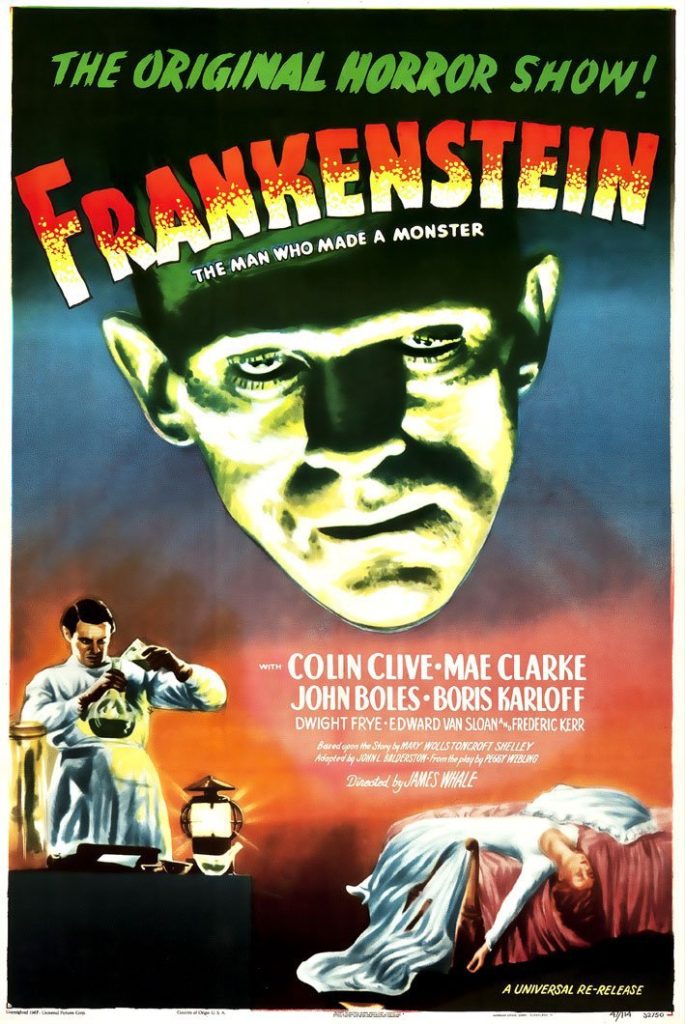
Directed by James Whale
Produced by Carl Laemmle Jr.
Written by Francis Edward Faragoh, Garret Fort based on the play by Peggy Webling and the novel by Mary Shelley
Starring Boris Karloff, Colin Clive, Edward Van Sloane and Dwight Frye
Budget: $265,000
Running Time: 71 minutes
Part One – Frankenstein is the first film in this class which we have screened in its entirety. This is because there is no way to study just part of the film. That would be a terrible injustice. It would be like looking at only one corner of a great painting or listening to only part of a symphony. We have seen only excerpts from other films but Frankenstein deserved a complete and uninterrupted screening. It really is that good. Most of you or all of you had never seen this film before even though you know the name and might even be familiar with what the monster looked like. This makes me jealous because the first time one sees a great film is always special. I have seen this film many times. Students sometimes ask me how many times and I suppose that by now it must be about two hundred times. That may shock you, but this is my work. Let me tell you something even more amazing. I will watch it for the 201st time in order to teach this class and I will not be bored. Moreover, I will probably see something new in the film I never noticed before. Or I will have a new idea about the film. It is not perfect film. No film is. But it is an endlessly interesting one.
Some things I can tell you about it before we begin are that production on the film began soon after the release of Dracula earlier in the year. You might recall that Bela Lugosi went on to do White Zombie after making Dracula. Why wasn’t he in Frankenstein? In fact, he was originally asked to take the part of the monster and the make-up artist Jack Pierce, the man who did the makeup for Conrad Veidt in The Man Who Laughed, did several tests on Lugosi. The tests were a failure because Pierce did not yet have a clear idea of what he wanted the monster to look like. Lugosi felt he looked ridiculous in the early versions of the make-up. Recall that he used no make-up at all to play Dracula. Moreover, the early script of the film had the monster as a much less interesting character. Lugosi saw the part as a step down from Dracula and refused the part. This has gone down in Hollywood legend as the single worst mistake any actor ever made because if Lugosi had been the monster in Frankenstein he would have certainly have been the next Lon Chaney. Instead his career stumbled and he never quite achieved another success like the one he had in Dracula.
However, other members of the Dracula cast did appear in Frankenstein. Dwight Frye, who played Renfield in Dracula would be Frankenstein’s assistant and Edward van Sloane who played Dracula’s enemy, Professor Van Helsing, would return as Doctor Waldman, a former professor of Frankenstein’s.
Frankenstein was made on an even lower budget than Dracula, which was possible in part because the sets for Dracula were recycled and used in Frankenstein. You will recognize some of the same things in both films if you have sharp eyes. Like Dracula, Frankenstein was a huge financial success for Universal. Between the two films Universal completely recovered its financial stability. Let us now once again see the brief introduction to the film
Part Two – Frankenstein begins in a most unusual way. Edward van Sloane, the actor who plays Dr. Waldman in the film, greets the audience in the “movie theater”. Of course, it isn’t a real movie theater, it is a set that looks like a movie theater. This breaks a “taboo” that existed in both the theater and in film. It is called “breaking the fourth wall”. There are said to be three real walls on the stage that contain the set, but the fourth is an imaginary one between the actors and the audience. We are allowed to see what happens on stage (or in front of the camera) because we can see through the fourth wall. However, the actors are supposed to pretend that they cannot see us. They pretend that the fourth wall is solid and cannot be seen through, otherwise the illusion that what is happening on the stage or in the film is real would be broken.
Frankenstein begins by breaking the fourth wall. Van Sloane explains to the audience that his reason for doing so is to warn us that the film may “horrify” us. (i.e,. fill us with horror). Well, that seems like a silly warning because why else would we go see a horror film. But remember, the term “Horror film” was brand new. The first time anyone called a film a “horror film” was only ten months previously when Dracula was released.
 In fact, Van Sloane is doing a bit of “marketing” or branding or perhaps both at once. He is telling us Frankenstein is a “horror” movie, the second after Dracula. The two films financial success made it clear to the Laemmles that what they now called “horror films” were going to be the bread and butter of their studio. It was at this time that Universal Studios started to be called by its nickname, “Uncle Carl’s House of Horror”. But of all the horror films Universal would go on to make in the thirties and forties, none would ever top the original Frankenstein. Frankenstein was almost a unique blend of the right director being hired to work with the right writers and then hiring the right actor to be his star. They were aided by an experienced cast and crew and an exceptionally talented makeup artist. But they were also fortunate to have a story to work with that allowed them to explore ideas no other horror film had yet touched on, at least not with the same stylistic “poetry” Frankenstein does.
In fact, Van Sloane is doing a bit of “marketing” or branding or perhaps both at once. He is telling us Frankenstein is a “horror” movie, the second after Dracula. The two films financial success made it clear to the Laemmles that what they now called “horror films” were going to be the bread and butter of their studio. It was at this time that Universal Studios started to be called by its nickname, “Uncle Carl’s House of Horror”. But of all the horror films Universal would go on to make in the thirties and forties, none would ever top the original Frankenstein. Frankenstein was almost a unique blend of the right director being hired to work with the right writers and then hiring the right actor to be his star. They were aided by an experienced cast and crew and an exceptionally talented makeup artist. But they were also fortunate to have a story to work with that allowed them to explore ideas no other horror film had yet touched on, at least not with the same stylistic “poetry” Frankenstein does.
Van Sloane then tells us that the Frankenstein story is one of the strangest ever told. In other words it is what we have already called an “uncanny”, unheimlich, or kwaidan-like story . But Van Sloane also informs us that the film deals with large philosophical themes that he calls the two great mysteries of creation: life and death. Indeed it does. We shall also see in the next excerpt that the breaking of taboos has just begun with breaking the fourth wall. We have many, many more taboos to break.
Within the first two minutes of his film, James Whale included a visual image more memorable and interesting than anything we see in Tod Browning’s Dracula. No wonder Carl Laemmle Jr. gave this film to this new director at Universal rather than letting Browning try again. Tod Browning, as we know, would return to M.G.M. (he seemed to be the proverbial cat with nine lives) where he would make the film Freaks in 1932, which almost completely ended his film career. I will compare Frankenstein and Freaks in a later lecture.
It is an extraordinary bit of playfulness by James Whale. But this is not a ghostly apparition, it seems to be standing there almost like a statue. It has “corporeal” substance. But statues don’t wear clothes. Can anyone else see it? The mourners soon depart and after the gravedigger finishes burying the body Frankenstein and Fritz come out of hiding and begin the dig. Recall that in White Zombie the people of Haiti buried their dead in the middle of the road to prevent the bodies from being stolen by grave robbers.
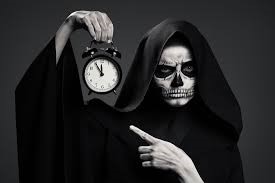
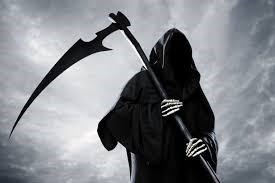
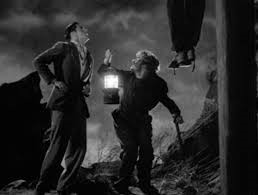

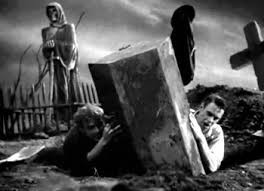
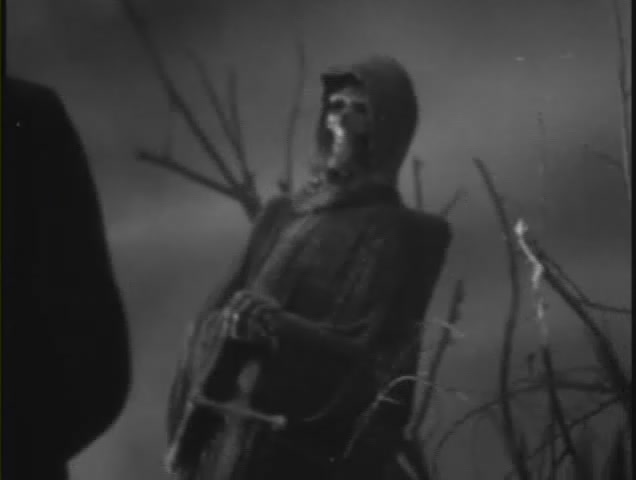
Here are Dr. Frankenstein and Fritz preparing to do exactly that, rob a dead body from its grave. You already know that it is a universal taboo to leave dead bodies unattended.
Similarly, it is also a universal taboo to disturb the dead once their bodies have been attended to. Leaving the dead unattended was dangerous according to legends and myths because to do so was to risk having the dead person rise from the dead and harm the living, often through cannibalism.
Similarly, to take the dead from their resting places was to risk the dead taking their revenge on those who disturb them.
But it is clear that Dr. Frankenstein does not fear Death or the taboos he is breaking as he carelessly shovels dirt into the face of Death…and steals the bodies he needs for his experiements.
Part Four – Dr. Waldman thinks Frankenstein’s intention is to bring a dead person back to life. If this were what Frankenstein was doing we would just have another vampire or zombie movie and we would expect that it would be magic, not science, which would make the dead walk once again. But Frankenstein is doing something quite different. Frankenstein claims that he is not bringing the dead back to life. His creation is not nosferatu, not a zombie or vampire, not the walking dead. He has made a new body by putting together old parts. Let me ask you to consider this question: is he really creating something new? Is his creation a new life?
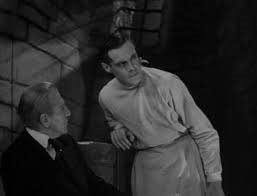

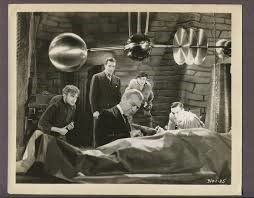 Part Five – One of my students many years ago said that what Frankenstein was really doing was “recycling”. But when we think about it, all life is recycled. Our bodies are more than 70% water and in the course of days or weeks every water molecule in our bodies is replaced. The same is true with the rest of our molecules and one day they will all simply be recycled when we die. Nothing is truly new, is it? What does it matter if it is old molecules or old arms and legs that are being reused? In any case, it is not assembling the parts of a body, which is Frankenstein’s great achievement, it is bringing the assembled parts to life. He is right when he says “it has never lived” and by bringing it to life he really is creating a new life. But how can he do this? This is similar to the question how did Dracula become a vampire? It took seventy years and another film, Bram Stoker’s Dracula, to answer that question about Dracula, but Frankenstein explains it all quite simply to Dr Waldman.
Part Five – One of my students many years ago said that what Frankenstein was really doing was “recycling”. But when we think about it, all life is recycled. Our bodies are more than 70% water and in the course of days or weeks every water molecule in our bodies is replaced. The same is true with the rest of our molecules and one day they will all simply be recycled when we die. Nothing is truly new, is it? What does it matter if it is old molecules or old arms and legs that are being reused? In any case, it is not assembling the parts of a body, which is Frankenstein’s great achievement, it is bringing the assembled parts to life. He is right when he says “it has never lived” and by bringing it to life he really is creating a new life. But how can he do this? This is similar to the question how did Dracula become a vampire? It took seventy years and another film, Bram Stoker’s Dracula, to answer that question about Dracula, but Frankenstein explains it all quite simply to Dr Waldman.
Part 6 – Frankenstein has discovered “the great ray which first brought life into the world”. This was not actually in the novel by Mary Shelley; James Whale and his team of writers, especially John L. Balderston, were responsible for these fascinating additions. Balderston’s play of Dracula formed the basis of the 1931 film Dracula directed by Tod Browning. Universal then bought his American adaptation of Peggy Webling‘s 1927 play Frankenstein, and used it as the basis for the 1931 film Frankenstein. Balderston is responsible for many of the brilliant intellectual additions to the story.
According to the dictionary a “ray” is a thin line or narrow beam of light or other radiant energy. In the Bible’s Book of Genesis, God creates the Universe by speaking (or thinking or imagining) the word “light” . We also recall that angels (like Lucifer) are beings made of pure “spirit” or light, (in scientific terms we might think of them as pure energy). The human soul is composed of this same “spirit” or energy.
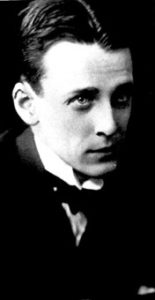 By discovering this “great ray that first brought life into the world” Frankenstein is breaking an even more serious taboo than that against disturbing the dead. Recall that in the Judeo-Christian-Islamic tradition we have already studied in the context of understanding the origins of evil, man’s “original sin” was eating the fruit from the Tree of Knowledge of good and evil. Adam and Eve were punished for stealing the knowledge of good and evil! They were expelled from the Garden of Eden and they were condemned to eventually die. (You can review all of this by going back to Lesson #10 and looking at the Homework Reading: The Origins of Evil).
By discovering this “great ray that first brought life into the world” Frankenstein is breaking an even more serious taboo than that against disturbing the dead. Recall that in the Judeo-Christian-Islamic tradition we have already studied in the context of understanding the origins of evil, man’s “original sin” was eating the fruit from the Tree of Knowledge of good and evil. Adam and Eve were punished for stealing the knowledge of good and evil! They were expelled from the Garden of Eden and they were condemned to eventually die. (You can review all of this by going back to Lesson #10 and looking at the Homework Reading: The Origins of Evil).
We can certainly see the close parallels between the Biblical story of God and Adam and Mary Shelley’s story of Frankenstein and his monster. God created Adam, just as Frankenstein created the monster. God gave man a soul (or spirit). Frankenstein has discovered a way to recreate or more likely capture the “light” or “spirt” or “energy” that he calls the “great ray of life” with his machines and uses it to bring life to his monster. In this way, Frankenstein resembles not God, but Adam because it was Adam who stole the fruit of knowledge. In other words, Frankenstein knows how to create life because he has stolen God’s secret knowledge.
But there is another story that is also parallel to Frankenstein. Recall that Mary Shelley subtitled her book “The New Prometheus”. Your homework (in addition to the review of The Origins of Evil) is to go online and learn about the myth of Prometheus (please do your own research). Then, think about how the Prometheus myth resembles both the story of Adam and God, and the story of Frankenstein and his monster.